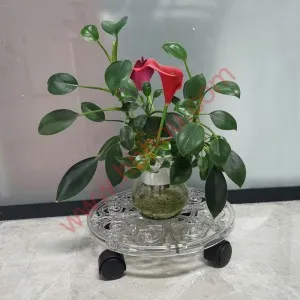The Ultimate Guide to Using Tomato Cages for Indeterminate Tomatoes
When it comes to growing tomatoes, especially indeterminate varieties, support systems like tomato cages can make a world of difference. Indeterminate tomatoes, which continue to grow and produce fruit throughout the season, require sturdy support to ensure that their sprawling vines and heavy fruit don't simply fall over. A well-constructed tomato cage can provide the necessary structure to promote healthy growth and maximize yield.
Why Use Tomato Cages?
Tomato cages serve several purposes in a tomato garden. First and foremost, they help keep the plants upright. Indeterminate tomatoes can reach heights of six feet or more, and without adequate support, the plants can become top-heavy and fall over. Moreover, a sturdy cage allows for better air circulation around the plant, which can help prevent diseases that thrive in humid conditions.
Additionally, cages can make harvesting easier. When tomatoes are grown on the ground, they can become dirty or difficult to reach. With a cage, the fruit is elevated, allowing for easier access and minimizing damage to the plants. This elevation also helps to keep the fruit off the ground, reducing the risk of rot and pest issues.
Choosing the Right Tomato Cage
When selecting a tomato cage for your indeterminate tomatoes, consider the materials and size. Wire cages are popular because they are sturdy and can last for multiple growing seasons. Look for cages that are at least five feet tall, as indeterminate tomatoes can grow quite tall. The cage should also be wide enough to accommodate the plant's growth; a diameter of 18-24 inches is often ideal.
tomato cage for indeterminate tomatoes

DIY tomato cages can also be an option for those who enjoy crafting and want a more customizable solution. Common materials for DIY cages include concrete reinforcement wire or heavy-duty garden stakes. Simply cut the wire to your desired height and shape it into a cylinder, ensuring that the openings are large enough for the tomato plants to grow through.
How to Use Tomato Cages Effectively
Once you have your tomato cages ready, it’s essential to set them up correctly. It’s best to place the cage around the tomato plants when they are still young and just a few inches tall. This ensures that the plants can grow into the cage rather than becoming entangled in it later on. As the plants grow, gently guide the vines through the openings in the cage, ensuring they have enough space to spread without damaging the stems.
Regular maintenance is also key to keeping your indeterminate tomatoes healthy. Check the cages regularly, and if you notice any vines that are leaning out or falling over, gently tuck them back into the cage. This not only helps with maintaining the structure of the plant but also encourages better photosynthesis and airflow when the leaves are well-positioned.
Conclusion
Using tomato cages for indeterminate tomatoes is an effective way to promote healthy growth, ease of harvesting, and overall plant vitality. By choosing the right cage and implementing proper maintenance, gardeners can enjoy a bountiful harvest throughout the growing season. Whether you purchase a pre-made cage or decide to construct your own, investing in a good support system is a vital step for any tomato enthusiast looking to maximize their garden's potential.
















